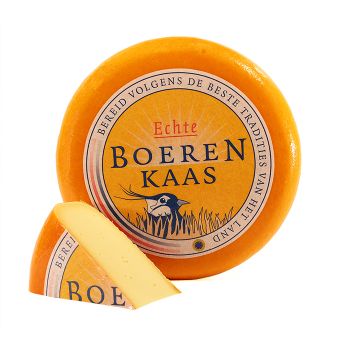
30+ cheese
With its low fat percentage, 30+ cheese falls under low-fat cheeses, making it a responsible choice for the true cheese lover who eats cheese almost every day. In addition to a low fat content, our 30+ cheeses also contain little salt. Despite this, the 30+ cheeses are delicious in taste, you can easily order them at the keenest price online!
- Low-fat farmer's cheese
Delicious low-fat 30+ farmer's cheese, nice and tangy but with less fat. These cheeses mature for at least 20 weeks in our ripening warehouse.
Learn MoreRegular Price €3.99 €3.99
Buy 30+ cheese
A 30+ cheese has a low fat content and thus belongs to the low-fat cheeses. Our low-fat 30+ cheeses are excellent to eat if you are on a diet and if you are a real cheese fanatic. A low fat percentage does not necessarily mean that the cheese is less powerful in taste. For instance, thanks to the unique ripening process, our low-fat farmer's cheese is tangy in flavour and low in fat thanks to the skimmed cow's milk. The low-fat farmer's cheese, made from raw milk and super tasty both on sandwiches and in various dishes, and other 30+ cheeses are easy to buy online at Cheese Online.
Meaning of fat content in 30+ cheese
There is a lot of confusion about the fat content in cheese. Many people are aware that 30+ cheeses are lower in fat than, say, a 38+ cheese or a 48+ cheese. However, people often make the mistake of thinking that in the case of a 30+ cheese, the cheese consists of 30% fat, but this is absolutely not the case.
This is because a cheese consists of water and solid nutrients, generally the distribution is 40% water and 60% solid nutrients. The fat content '30+' refers only to the solids, i.e. 60% of the total. So it is not the case that a 100-gram piece of cheese contains 30 grams of fat. The fat content in grams is then around 18 grams (30% of 60 grams).
The meaning of the plus sign
The plus sign indicates the deviation from the fat content. This is because the ratio of solids to moisture is not the same in a young and an old cheese. Because an old cheese has matured longer, it contains less moisture and more solids. This also means that there is proportionally more fat in old cheese than in young cheese. Although this deviation is not large, the plus sign indicates that it is present.


